Book Reviews
Bramblewild
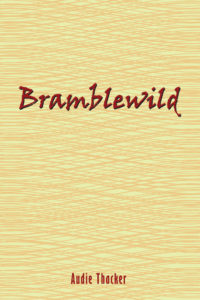 Mason Bramblewild grew up in the countryside with family and nature and a general wholesomeness. Driven by heartbreak into the wide world, he lives the wandering and violence of the caravans. In time he comes to Thornblack, a hidden city of one law: Let the strong prevail. Audie Thacker’s classic-style fantasy Bramblewild roams over varied landscapes and stages familiar races, such as elves and dwarves. But halflings and orcs loom largest in the story and go far beyond stereotypes, while chapels and preachers declare the social practice of religion—a welcome detail of world-building. The author artfully develops different places and cultures, though the attention paid to them sometimes delays the plot. Despite its occasional slowness, Bramblewild is an engaging journey with a comforting end.
Mason Bramblewild grew up in the countryside with family and nature and a general wholesomeness. Driven by heartbreak into the wide world, he lives the wandering and violence of the caravans. In time he comes to Thornblack, a hidden city of one law: Let the strong prevail. Audie Thacker’s classic-style fantasy Bramblewild roams over varied landscapes and stages familiar races, such as elves and dwarves. But halflings and orcs loom largest in the story and go far beyond stereotypes, while chapels and preachers declare the social practice of religion—a welcome detail of world-building. The author artfully develops different places and cultures, though the attention paid to them sometimes delays the plot. Despite its occasional slowness, Bramblewild is an engaging journey with a comforting end.
Best for: Teens; fans of traditional fantasy.
Discern: Violence, including wild animal attacks on defenseless victims; implied prostitution and sex slavery; one incident of implied child abuse; a legend, loosely inspired by the story of Jacob, Leah, and Rachel, depicts a man tricked into sleeping with his wife’s sisters.
Child of the Kaites
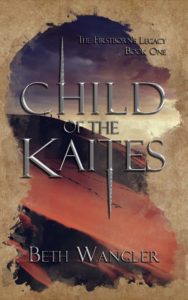 Child of the Kaites retells the Exodus account in a fantasy world. In Beth Wangler’s story, two Champions work together to free their people, the Maraians, from slavery to the Izyphor. They must face down false rumors about their people, an Izyphorn sultan who refuses to let them go free, and spiritual beings who fight against them. Angels and demons, respectively called kaites and aivenkaites, feature in many of the book’s conflicts. Despite a somewhat confusing backstory, the Champions, Raiballeon and Saviayr, show well-realized characterization, and the overall narrative flies like a thematic arrow toward the real-life account of how God freed his people from Egypt, and then later from the even stronger slavery to sin.
Child of the Kaites retells the Exodus account in a fantasy world. In Beth Wangler’s story, two Champions work together to free their people, the Maraians, from slavery to the Izyphor. They must face down false rumors about their people, an Izyphorn sultan who refuses to let them go free, and spiritual beings who fight against them. Angels and demons, respectively called kaites and aivenkaites, feature in many of the book’s conflicts. Despite a somewhat confusing backstory, the Champions, Raiballeon and Saviayr, show well-realized characterization, and the overall narrative flies like a thematic arrow toward the real-life account of how God freed his people from Egypt, and then later from the even stronger slavery to sin.
Best for: Fans of young-adult fiction.
Discern: Spiritual battles that could cause some confusion, such as when the demons/aivenkaites are confronted and controlled by use of their names, and when the hero bargains with Aivenah/Satan toward the book’s end.
The Curse of the Vassal Fruit
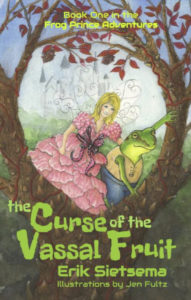 The Curse of the Vassal Fruit starts out as a light and fluffy children’s story, but by the end, Eric Sietsema’s narrative has some hop to it. Two young protagonists, a frog prince with dreams of becoming a hero and a fairy princess obsessed with tea parties and acting important, have set aside their childish concerns and begun a journey to confront a threat to their peoples and allies. This journey will continue in future installments. Although it’s enjoyable by itself, the novel also features Easter egg–like references to other well-known fantasy stories, which older readers will find humorous and younger readers will enjoy as they grow older and read those other works.
The Curse of the Vassal Fruit starts out as a light and fluffy children’s story, but by the end, Eric Sietsema’s narrative has some hop to it. Two young protagonists, a frog prince with dreams of becoming a hero and a fairy princess obsessed with tea parties and acting important, have set aside their childish concerns and begun a journey to confront a threat to their peoples and allies. This journey will continue in future installments. Although it’s enjoyable by itself, the novel also features Easter egg–like references to other well-known fantasy stories, which older readers will find humorous and younger readers will enjoy as they grow older and read those other works.
Best for: Elementary-aged kids.
Discern: Minimal objectionable content, such as the child characters’ immaturity, the frog prince’s disobedience to elders, and the fairy princess’s vain and bossy behavior.
Dragons and Romans
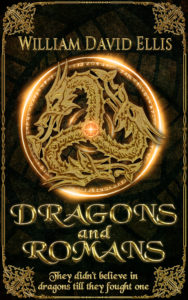 The first Punic War was a close affair. By the third war, no question remained: Rome would defeat Carthage. With earthly strength exhausted, and no thought to heaven, Carthage turns to hell, sacrificing their most innocent to call up demonic power and unleash dragons and spirits on Rome. Dragons and Romans, from William David Ellis, blends historical fiction with spiritual warfare and a dash of fantasy. Roman soldiers fight the dragon, but a Jewish woman is gathered by calamity into the Roman camp and fights the powers behind the dragon, guided by a famous (and dead) prophet. The prophet’s involvement, and a phenomenon similar to astral projection, may raise theological questions. However, Dragons and Romans invests the climactic Third Punic War with high peril, deep meaning, and the spark of the fantastical.
The first Punic War was a close affair. By the third war, no question remained: Rome would defeat Carthage. With earthly strength exhausted, and no thought to heaven, Carthage turns to hell, sacrificing their most innocent to call up demonic power and unleash dragons and spirits on Rome. Dragons and Romans, from William David Ellis, blends historical fiction with spiritual warfare and a dash of fantasy. Roman soldiers fight the dragon, but a Jewish woman is gathered by calamity into the Roman camp and fights the powers behind the dragon, guided by a famous (and dead) prophet. The prophet’s involvement, and a phenomenon similar to astral projection, may raise theological questions. However, Dragons and Romans invests the climactic Third Punic War with high peril, deep meaning, and the spark of the fantastical.
Best for: Adults; fans of Frank Peretti and historical fiction.
Discern: Graphic violence, including death and injury by fire; references to torture; child sacrifice on a large scale, occurring offscreen; moderate language.
The Electrical Menagerie
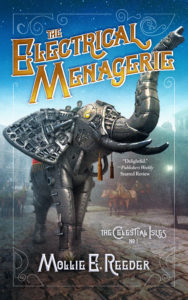 Mollie E. Reeder’s The Electrical Menagerie starts out bright and shiny like a circus show, but swiftly morphs into a buddy cop–style mystery. Trick master Carthage strives to prove a childhood illness can’t ruin his future, while money-wise Huxley seeks to prove his rich parents are wrong about him, his career choice, and his ability to make a fortune outside of their hereditary one. Both are keeping secrets, but upcoming trials will prove that partnership works best when based on friendship and honesty. Set in an exotic world of flying horses and flying trains, this story’s light touch of romantic intrigue leaves room for richer developments in future. Here, magicians’ rivalries are backlit by murder, and the characters, scenery, and action are so well-drawn that the experience of reading this novel feels more like watching a movie.
Mollie E. Reeder’s The Electrical Menagerie starts out bright and shiny like a circus show, but swiftly morphs into a buddy cop–style mystery. Trick master Carthage strives to prove a childhood illness can’t ruin his future, while money-wise Huxley seeks to prove his rich parents are wrong about him, his career choice, and his ability to make a fortune outside of their hereditary one. Both are keeping secrets, but upcoming trials will prove that partnership works best when based on friendship and honesty. Set in an exotic world of flying horses and flying trains, this story’s light touch of romantic intrigue leaves room for richer developments in future. Here, magicians’ rivalries are backlit by murder, and the characters, scenery, and action are so well-drawn that the experience of reading this novel feels more like watching a movie.
Best for: Fans of The Greatest Showman and Sherlock Holmes.
Discern: Very mild violence, murder, kidnapping, and some drugged wine.
Fairest Son
 H. S. J. Williams’ novella Fairest Son contains familiar echoes: seven “dwarves,” a poison apple, a poem of prophecy. But the story is unique. Keeva, a young human woman, hunts in the mountains where she encounters a mysterious man of the fae people—one who hides his face under wrappings, communicates via mindspeak, and has seven goblin friends/servants. She tells him she’s hunting the great wild bear, but she’s lying. From there the story unspools a tale of treachery and deceit that leads to redemption. Christians will gladly recognize a type of Christ in one of the characters. Non-Christians will likely also feel the emotional uplift.
H. S. J. Williams’ novella Fairest Son contains familiar echoes: seven “dwarves,” a poison apple, a poem of prophecy. But the story is unique. Keeva, a young human woman, hunts in the mountains where she encounters a mysterious man of the fae people—one who hides his face under wrappings, communicates via mindspeak, and has seven goblin friends/servants. She tells him she’s hunting the great wild bear, but she’s lying. From there the story unspools a tale of treachery and deceit that leads to redemption. Christians will gladly recognize a type of Christ in one of the characters. Non-Christians will likely also feel the emotional uplift.
Best for: Teens and adults familiar with fairy-realm fantasy and ready to dive right in.
Discern: Mature themes that are delicately handled, but may make the book unsuitable for children under twelve.
Flower
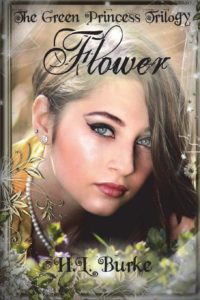 With Flower, H. L. Burke’s Green Princess trilogy bursts out onto a world where magic users have divided into four factions. Each has a hereditary power, such as plants, fire, “the sight,” and super speed, and is led by a hereditary master, or Key. Fire-wielders won the magic war, and the Flora Key is supposed to be dead. But sheltered Kitrin’s teenage rebellion coincides with faintly manifesting powers, which could endanger her even more than her new, forbidden forest–friendship with the king’s mysterious nephew. Kitrin naïvely trips through the viny path her life has become, unaware that a war amputee (plus a bonded plant-dragon) is hunting the newly awakening greenery magic. The series entwines around the tropes of “young, “ as well as the Chosen One, but Burke’s clever twists keep the story fresh while still delivering on classic premises.
With Flower, H. L. Burke’s Green Princess trilogy bursts out onto a world where magic users have divided into four factions. Each has a hereditary power, such as plants, fire, “the sight,” and super speed, and is led by a hereditary master, or Key. Fire-wielders won the magic war, and the Flora Key is supposed to be dead. But sheltered Kitrin’s teenage rebellion coincides with faintly manifesting powers, which could endanger her even more than her new, forbidden forest–friendship with the king’s mysterious nephew. Kitrin naïvely trips through the viny path her life has become, unaware that a war amputee (plus a bonded plant-dragon) is hunting the newly awakening greenery magic. The series entwines around the tropes of “young, “ as well as the Chosen One, but Burke’s clever twists keep the story fresh while still delivering on classic premises.
Best for: Fans of princess stories, true love, and creative magic systems who enjoy watching these leaves unfold; fans of H. L. Burke will not be disappointed.
Discern: Some strong innuendo from side characters, and a fade-to-black, “meant to be” pre-wedlock consummation.
Hideous Beauty
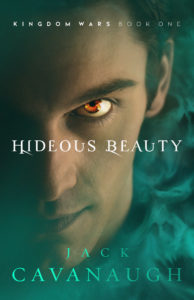 Jack Cavanaugh’s Hideous Beauty hits an eerie note from page one. Grant Austin’s return to his old San Diego high school gives him a chance to flaunt his victory over an old teen nemesis. But said nemesis has sold his soul to a vortex of beautiful destruction, and Grant is discarded after their encounter like a limp plastic bag, convinced he’s included in someone’s nefarious plan. Adding awkwardness to injury, Grant can’t seem to say anything right to his still-dazzling old flame, his recent girlfriend, or the gorgeous assistant of an angel-studying professor. Good thing they’ll band together before it’s all over. Playing thematically with half-demon Nephilim and the descendants thereof, Hideous Beauty strives to (very) graphically illustrate the war of dark versus light waged unseen by mere mortals.
Jack Cavanaugh’s Hideous Beauty hits an eerie note from page one. Grant Austin’s return to his old San Diego high school gives him a chance to flaunt his victory over an old teen nemesis. But said nemesis has sold his soul to a vortex of beautiful destruction, and Grant is discarded after their encounter like a limp plastic bag, convinced he’s included in someone’s nefarious plan. Adding awkwardness to injury, Grant can’t seem to say anything right to his still-dazzling old flame, his recent girlfriend, or the gorgeous assistant of an angel-studying professor. Good thing they’ll band together before it’s all over. Playing thematically with half-demon Nephilim and the descendants thereof, Hideous Beauty strives to (very) graphically illustrate the war of dark versus light waged unseen by mere mortals.
Best for: Older teens and adults; fans of paranormal thrillers.
Discern: Graphic supernatural depictions, such as demonic possessions, representations of hierarchical demons by name, and recent physical “liaisons” between mortal woman and disguised demons; as well as romantic and physical male/female tension and Nephilim as “born unredeemable” plot points.1
The Rejected Princess
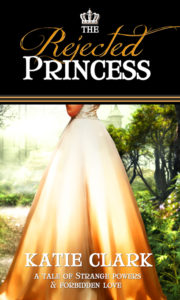 Hereditary monarchy may not be known for letting its hair down, but at least it has the virtue of simplicity: there’s nothing quite like an inter-royal wedding for preventing war. While Princess Roanna of Chester’s Wake knows her duty—to marry the haughty ambassador from backwards Dawson’s Edge—there’s more than her feelings for Prince Benjamin of Lox frazzling her focus. Strange sensory phenomena have been afflicting her of late, and a clue from her past may unpin a cascade of dark secrets that shake the roots of royal power. With The Rejected Princess, Katie Clark has fashioned a cozy political thriller braided with thoughtful ambiguity and adorned with romance. Its characters are bright, its setting an amalgam of the medieval and the micro-electrical, and its social commentary delightfully understated. There’s more under this hat than meets the eye.
Hereditary monarchy may not be known for letting its hair down, but at least it has the virtue of simplicity: there’s nothing quite like an inter-royal wedding for preventing war. While Princess Roanna of Chester’s Wake knows her duty—to marry the haughty ambassador from backwards Dawson’s Edge—there’s more than her feelings for Prince Benjamin of Lox frazzling her focus. Strange sensory phenomena have been afflicting her of late, and a clue from her past may unpin a cascade of dark secrets that shake the roots of royal power. With The Rejected Princess, Katie Clark has fashioned a cozy political thriller braided with thoughtful ambiguity and adorned with romance. Its characters are bright, its setting an amalgam of the medieval and the micro-electrical, and its social commentary delightfully understated. There’s more under this hat than meets the eye.
Best for: Teens and adults seeking romance, political intrigue, mystery, and modern monarchy.
Discern: References to war casualties and to “termination” (an abortion analogue), persistent sexual tension, some making out, and lots of ardent yearning.
Sand and Storm
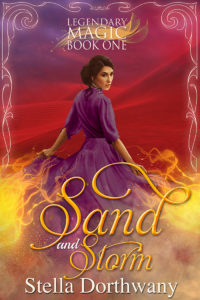 Stella Dorthwany’s Sand and Storm tells a thrilling tale of magic, suspense, and working against the clock to save the world. Two main characters, cousins Faryn and Cora, are thrown together after a long separation. Faryn seeks adventure and finds it in an internship with Shaun Valerian, while Cora wants to navigate a new marriage to a man she barely knows. Both are drawn to an archaeological dig, the center of a magic spell that could mean the end of the world. They must work together, and with the people they love and hate, to save everything they know. This book is a delightful read, with a unique and well-developed magic system, engaging characters with compelling arcs, and a thrilling plot full of fun twists.
Stella Dorthwany’s Sand and Storm tells a thrilling tale of magic, suspense, and working against the clock to save the world. Two main characters, cousins Faryn and Cora, are thrown together after a long separation. Faryn seeks adventure and finds it in an internship with Shaun Valerian, while Cora wants to navigate a new marriage to a man she barely knows. Both are drawn to an archaeological dig, the center of a magic spell that could mean the end of the world. They must work together, and with the people they love and hate, to save everything they know. This book is a delightful read, with a unique and well-developed magic system, engaging characters with compelling arcs, and a thrilling plot full of fun twists.
Best for: Young adults who enjoy a fun story in a magical world and appreciate a romantic subplot or two.
Discern: Open discussion about sex, implied sex in the context of marriage, and some sensual scenes.
Shivering World
 It’s the twenty-second century, and mankind is so over human genetic engineering. Anyone who possesses a tampered genome will be hunted down and irradiated. For Graysha Brady-Phillips, sufferer of a legally incurable genetic disease, this constitutes a death sentence. Unless, that is, she convinces the mysterious Lwuites, terraformer colonists of inhospitable Goddard, to divulge their secrets. But how can she win their trust when her mother, Eugenics Board enforcer, may descend on Goddard in wrath? Sci-fi luminary Kathy Tyers has revised her 1991 novel of the same title to include pronoun-heavy conversations about Christ. Fortunately, this story grows on the reader much faster than bacteria in a barren biosphere. With scientific specificity, slow-burn character studies reminiscent of The Vorkosigan Saga, and subtle romance that out-thaws any greenhouse effect, Shivering World is good medicine.
It’s the twenty-second century, and mankind is so over human genetic engineering. Anyone who possesses a tampered genome will be hunted down and irradiated. For Graysha Brady-Phillips, sufferer of a legally incurable genetic disease, this constitutes a death sentence. Unless, that is, she convinces the mysterious Lwuites, terraformer colonists of inhospitable Goddard, to divulge their secrets. But how can she win their trust when her mother, Eugenics Board enforcer, may descend on Goddard in wrath? Sci-fi luminary Kathy Tyers has revised her 1991 novel of the same title to include pronoun-heavy conversations about Christ. Fortunately, this story grows on the reader much faster than bacteria in a barren biosphere. With scientific specificity, slow-burn character studies reminiscent of The Vorkosigan Saga, and subtle romance that out-thaws any greenhouse effect, Shivering World is good medicine.
Best for: Adult fans of intelligent sci-fi willing to tackle religious questions.
Discern: Some innuendo and discussions of sex, brief sensuality, murderous scheming, infrequent violence, and discussion of the behavioral implications of genetic engineering.
Thoughtreal
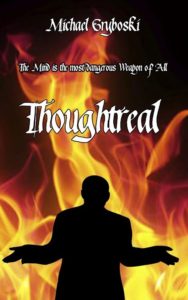 Thoughtreal spins an X-Files–like story of law enforcement officers trying to track down people with the power to create and destroy with their minds and imaginations. Michael Gryboski has thought up an intricate narrative that avoids potential tropes while touching on issues like ancient racial conflicts and shallow modern relationships, while exploring how different religious worldviews can lead to very different outcomes. Readers may only stumble when information about a character or location is delayed, or when the story’s perspective suddenly shifts. Nonetheless, most adult readers will be captivated by this story.
Thoughtreal spins an X-Files–like story of law enforcement officers trying to track down people with the power to create and destroy with their minds and imaginations. Michael Gryboski has thought up an intricate narrative that avoids potential tropes while touching on issues like ancient racial conflicts and shallow modern relationships, while exploring how different religious worldviews can lead to very different outcomes. Readers may only stumble when information about a character or location is delayed, or when the story’s perspective suddenly shifts. Nonetheless, most adult readers will be captivated by this story.
Best for: Adult readers.
Discern: A few profanities, one short making-out scene with a few details, and some violence and deaths.
- Correction: A previous version of the review for Jack Cavanaugh’s Hideous Beauty included additional points of possible concern, for which we’ve since received clarity. Learn more about Lorehaven’s review format and Discern section. ↩

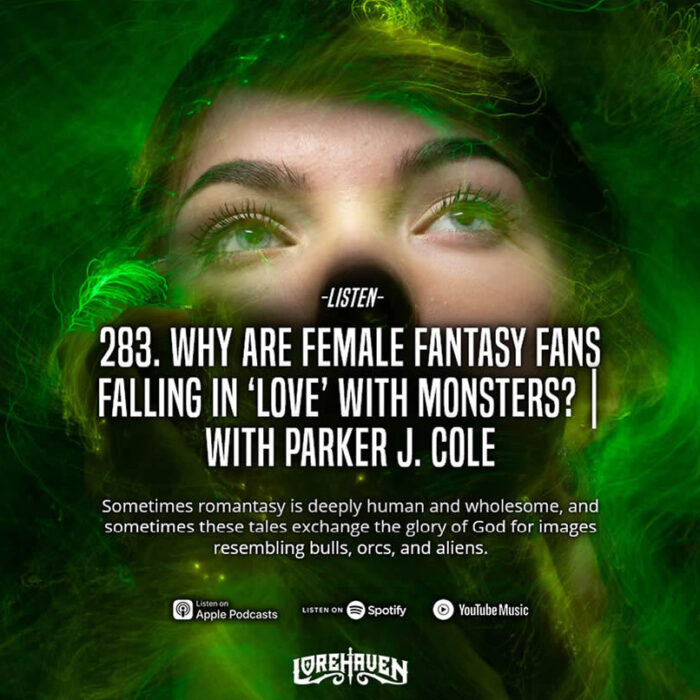
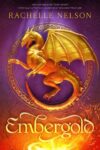

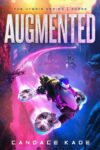
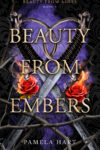
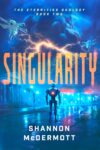
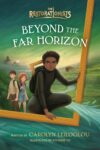
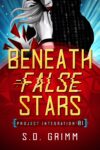
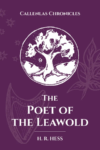


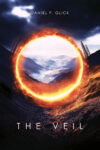
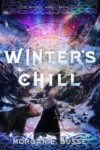
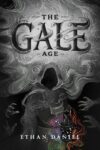
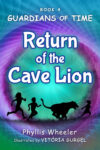

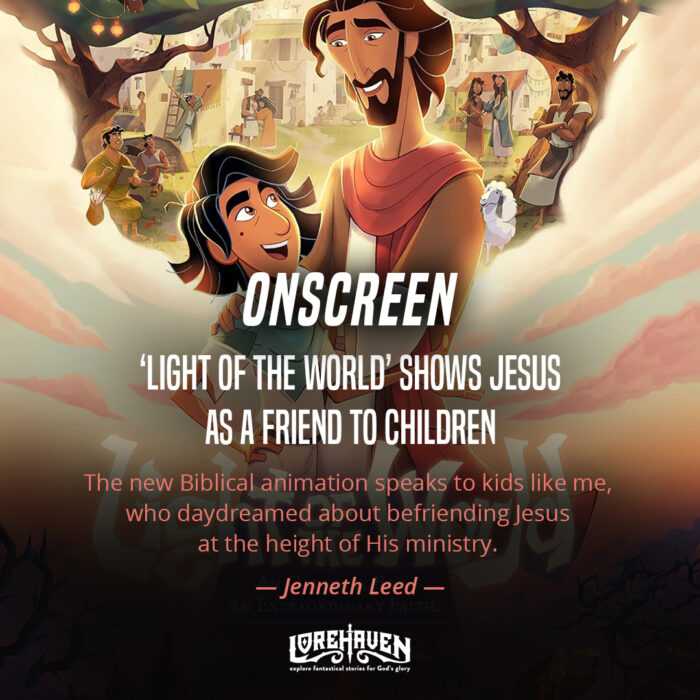
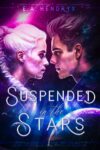
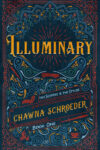

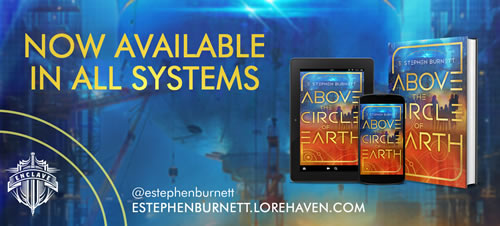
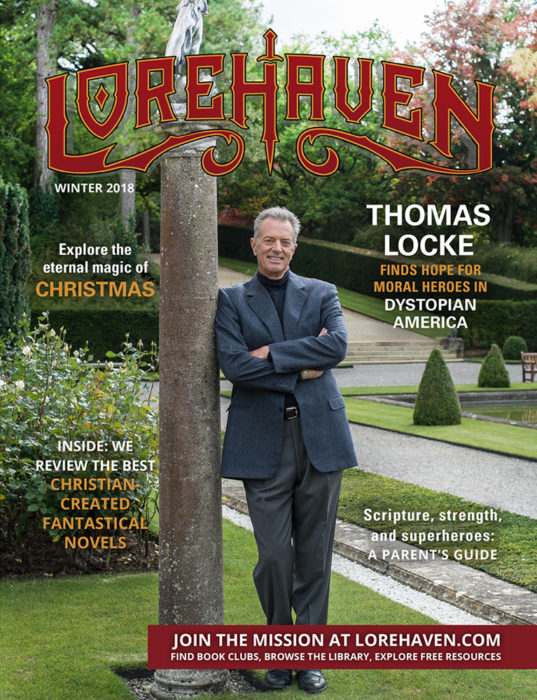

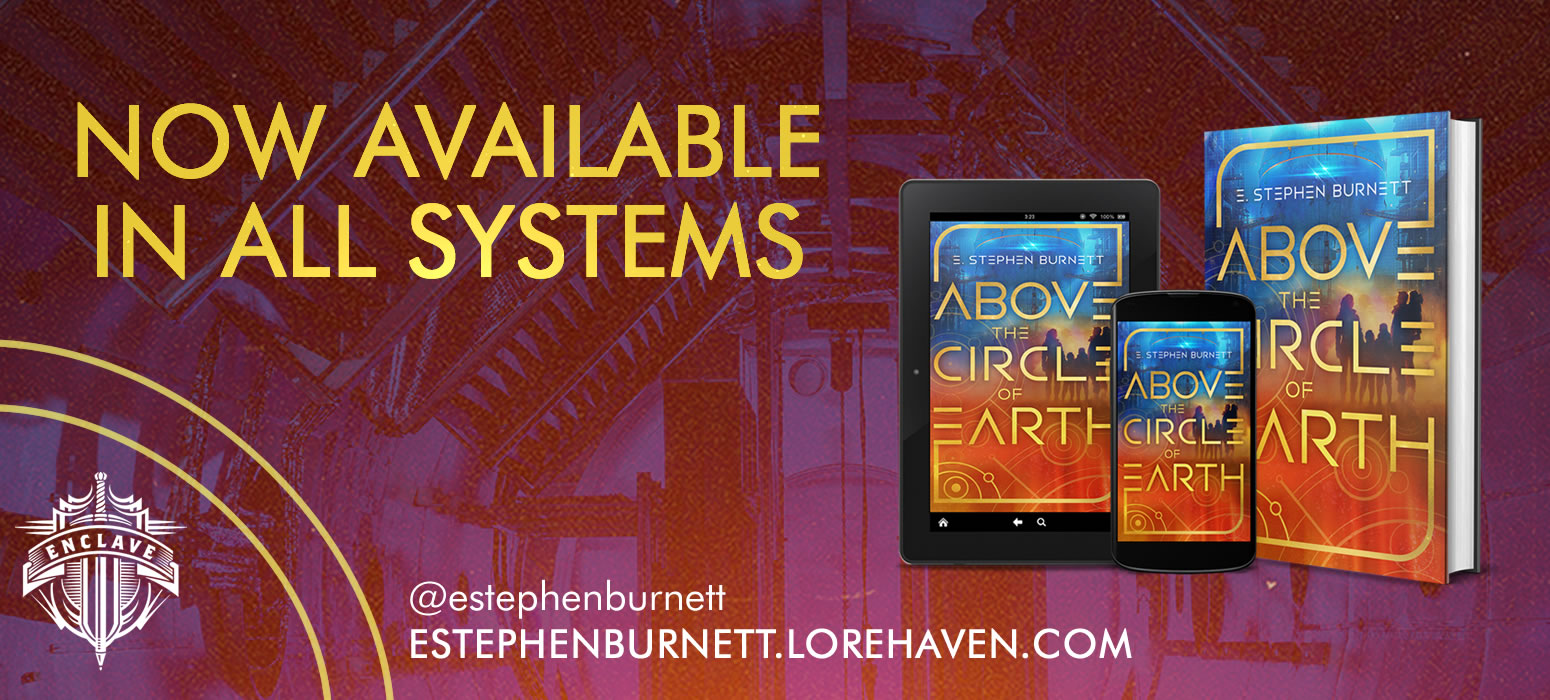
[…] Read the complete review here. […]
[…] Our Lorehaven Magazine reviewer enjoyed Mollie E. Reeder’s novel The Electrical Menagerie. We wrote: “. . . Magicians’ rivalries are backlit by murder, and the characters, scenery, and action are so well-drawn that the experience of reading this novel feels more like watching a movie.” (Get the full review exclusively from Lorehaven with a free subscription.) […]